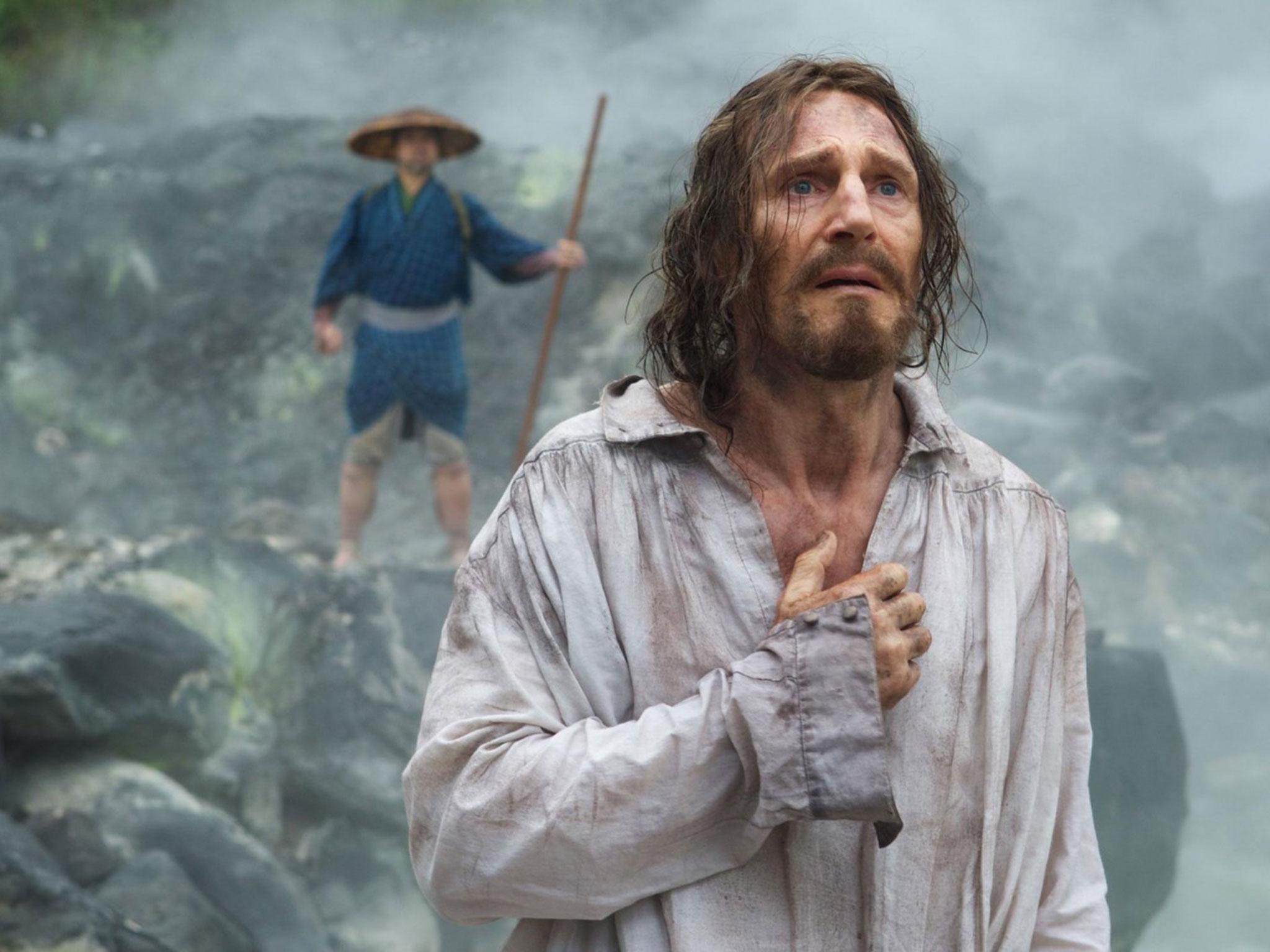Martin Scorsese's Silence review: It is forbidding and austere in the extreme
Martin Scorsese's meditation on faith stars Adam Driver and Andrew Garfield as two 17th-century missionaries looking for their mentor Liam Neeson in Japan after rumours he has renounced Christianity

There’s a sense of yin and yang about Martin Scorsese’s filmmaking career. He’ll make one feature for his Hollywood paymasters and then he will follow it up with one for himself. In 2013, he had a big box office success with The Wolf Of Wall Street, one of his gaudiest and most decadent films. He has now followed it up with Silence which is forbidding and austere in the extreme. This is a movie that he has been trying to get off the ground for years - and it isn’t hard to understand why financiers were so reluctant to support it.
Based on a novel by Shūsaku Endō, Silence is a story of Jesuit priests risking their lives in the Seventeenth Century to bring Christianity to Japan. We couldn’t be further from the world of Goodfellas and Casino. Just occasionally, there will be hints of the Scorsese we know - a decapitation scene in which the blood spurts skyward from the stem of the victim’s neck or scenes of the Japanese torturing the Christians with a ruthless ingenuity that Mob enforcers would surely admire. Generally, though, the emphasis here is on the nature of religious faith - and on the agony of religious doubt.
Andrew Garfield and Adam Driver play Father Rodriguez and Father Garrpre, young Portuguese priests who head to Japan as “an army of two.” They’ve heard disturbing rumours that one of their leaders Father Ferreira (Liam Neeson) has “apostatised” - that’s to say, he has renounced his Christian faith. Rodriguez is sure that this is just a scurrilous rumour. However, when he and Garrpre arrive in Japan, they quickly realise just how viciously Christianity is being suppressed. Japanese villagers hide them away but the 'inquisitor' is never far behind them. This is a world in which Christians are asked to spit on the cross or to stamp on an image of the Christ to prove they renounce their faith. If they demur, they or their families will be put in straw blankets and burned alive or they will be crucified or they will be hung upside down with an incision made in their head so that they bleed to death, tiny drop by tiny drop.
Garfield and Driver excel as the driven young priests, zealous young idealists who half want to be caught and tortured just so that they can test their faith. When we first encounter them in Europe, seeking the permission of Father Valignano (Ciaran Hinds) to go on their mission, they have the confidence of their own youth and athleticism. In Japan, though, they become more and more bedraggled. The inquisitor (Issei Ogata) is an old man who laughs constantly but knows just how to identify the men’s weak points. Often, the priests won’t be tortured themselves but will be made to witness the torture of others. They will be told that the only way to stop their pain is to renounce their faith. This presents a terrible dilemma to the priests whose faith is precisely about trying to alleviate suffering.

What the film doesn’t make clear, in spite of the voiceovers from Rodriguez and Ferreira, is why the Japanese Buddhists are so fearful of Christianity - and why the Jesuit priests are so desperate to convert them. The Japanese react to Christianity as if it is some form of the Zika virus. They are terrified that their country will become contaminated. They will trade with the Europeans but won’t accept any part of their religion. Rodriguez, meanwhile, begins to regard Japan as a swamp in which it is impossible for Christianity to put down roots.
We’re so used to seeing Liam Neeson in action movies that we half expect that he will fight his way out of trouble. He is as imposing as ever as Father Ferreira but there are no martial arts here. His scenes with Garfield are among the strongest in the film. The younger man reveres him but is baffled and disgusted by his behaviour. Ferreira has perfect logic behind him for all his actions. He accepts the wisdom of his hosts and is able to decode the behaviour of the Japanese Christians. Their version of Catholic faith is very different from that of the priests. There’s a sense of a cultural divide between the Europeans and the Japanese that just can’t be bridged. They simply don’t understand one another.
Early in the film, Rodriguez makes an observation about the Japanese Christians, pointing out that their faces betray no emotion. They’re so used to worshipping in secret that they’ve taught themselves to behave in an impassive fashion. The same applies to Jesuits like Father Ferreira and Father Rodriguez the longer they spend in Japan. Their faith, or lack of it, can’t be measured in their outward behaviour. The film itself has an inscrutable quality. It can be read either as a desperate story about the protagonists losing their religion - or a triumphant one about their clinging to it in the most adverse circumstances.
Silence can seem forbidding. Long drawn out and with a very deliberate storytelling style, it is as much a meditation on faith and betrayal as it is a conventional drama. In its slow-burning way, though, it makes very absorbing viewing. If it doesn’t work at the box office, one prediction can be made - Scorsese will no doubt have to do his penance and make a gangster movie next time instead.
Join our commenting forum
Join thought-provoking conversations, follow other Independent readers and see their replies
Comments
Bookmark popover
Removed from bookmarks